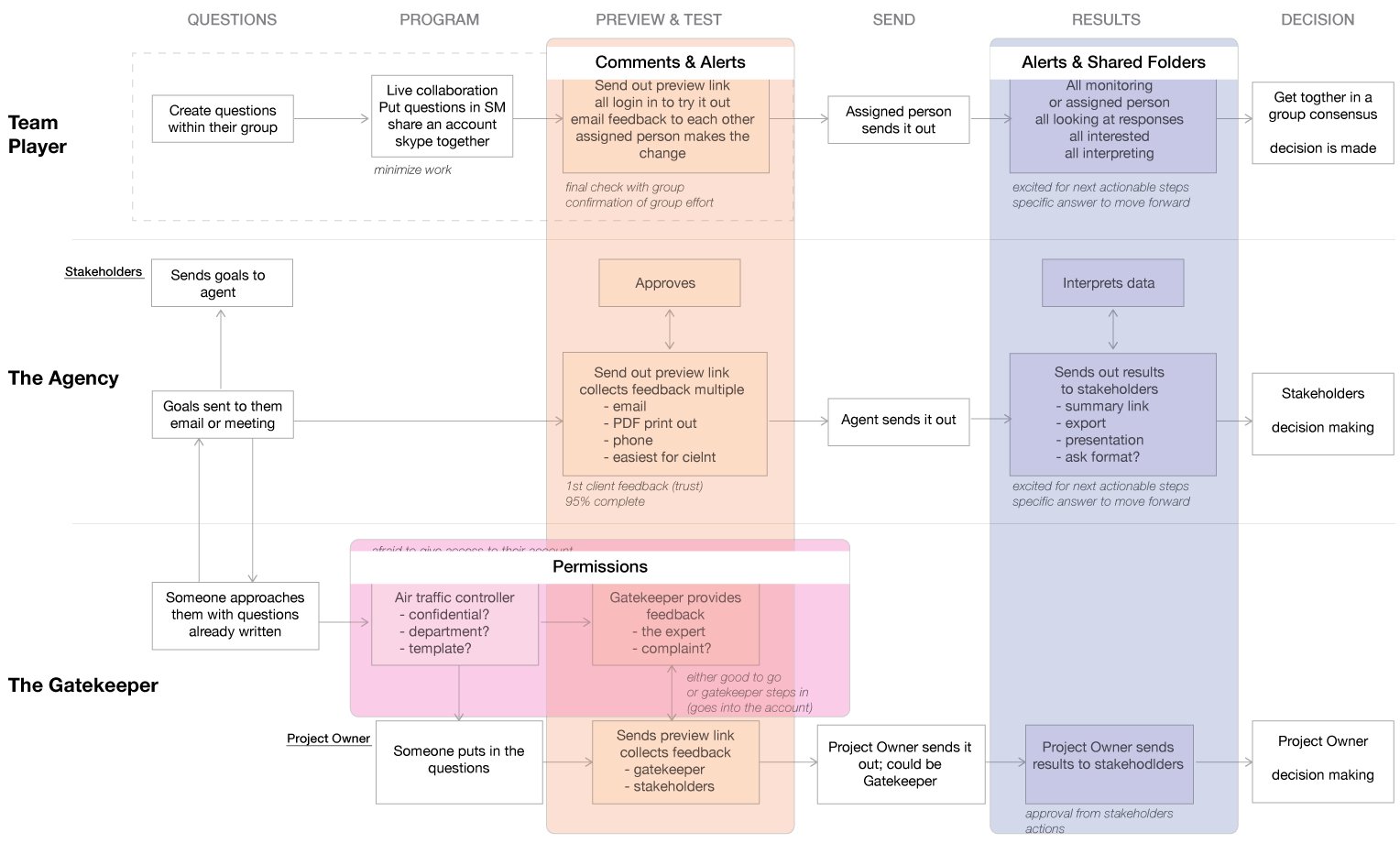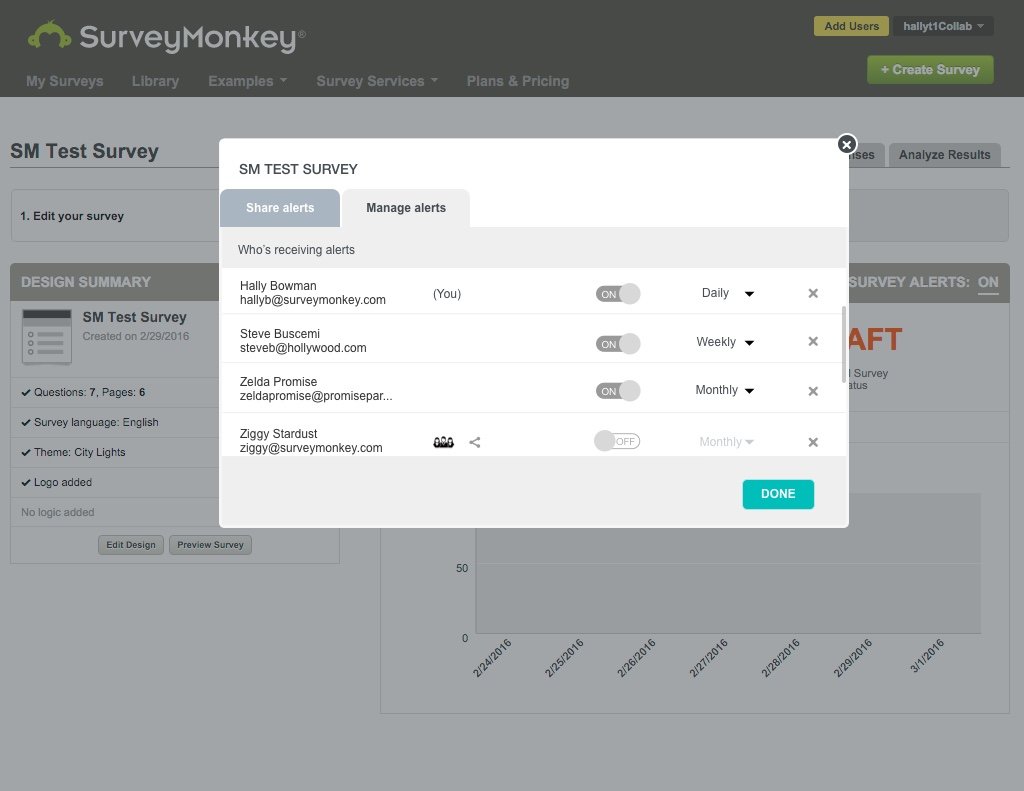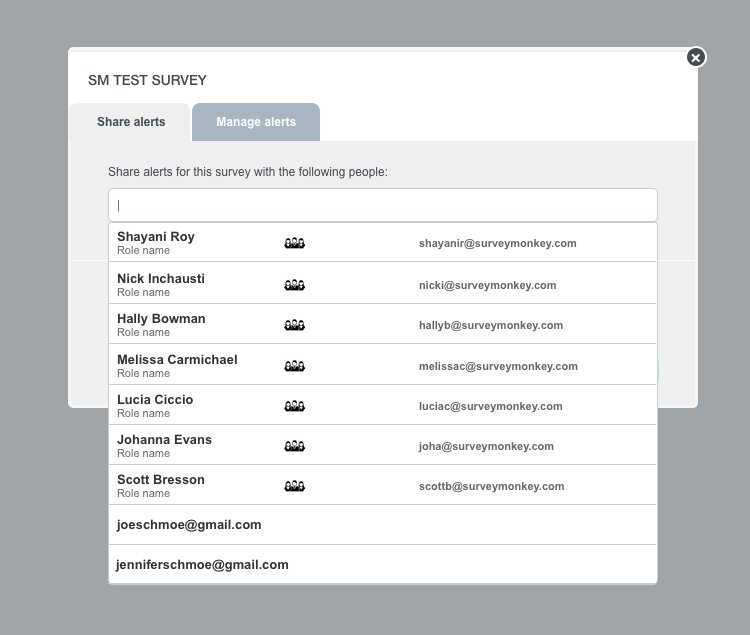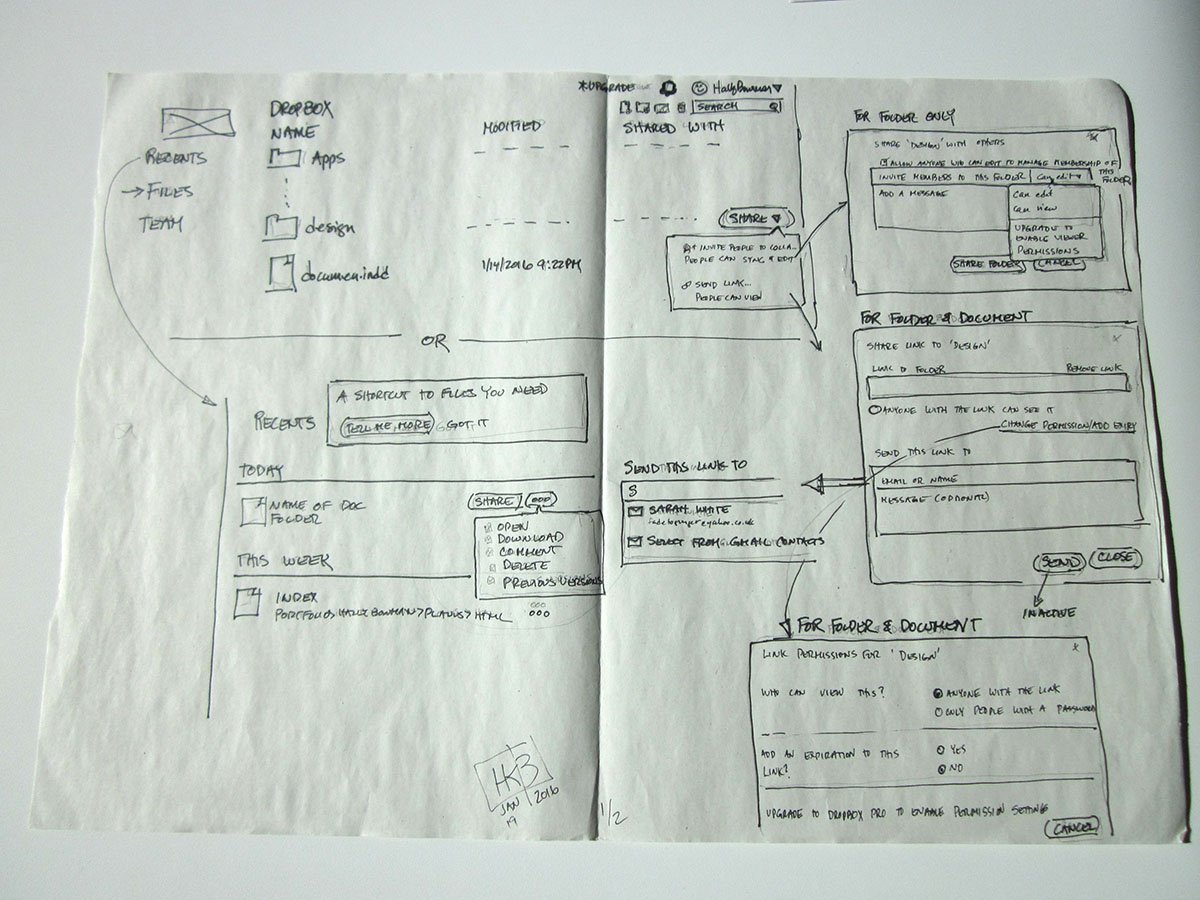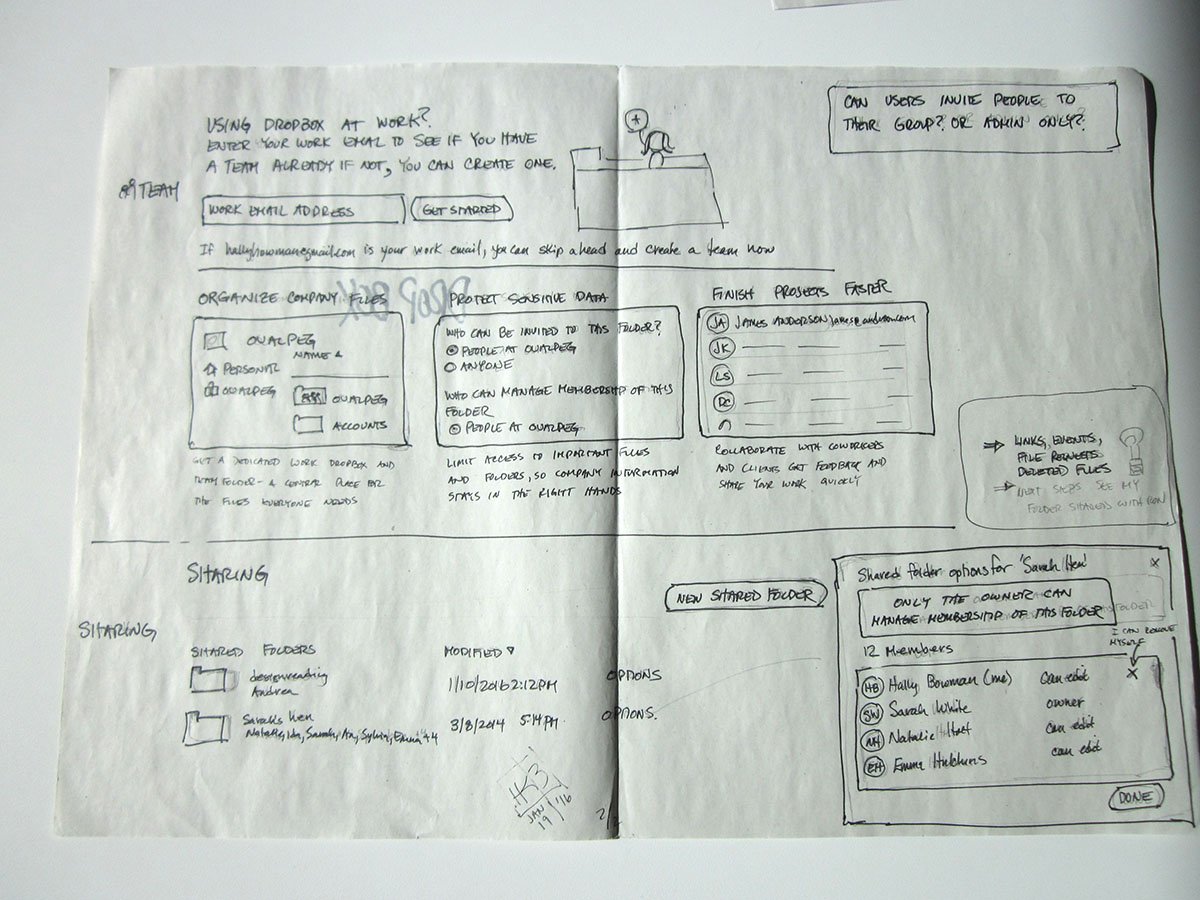Concept designs for collaborating within teams and sharing alert notifications
A collaboration feature matrix showing collaboration themes by persona across the complex survey user journey including survey creation, data collection and analysis
Collaboration features are unforgiving as far as user expectations for a simple, intuitive and seamless experience. At the time SurveyMonkey had very little collaboration features to speak of.
I had the opportunity to lead a research and design effort early on in the product scoping phase which established more of a collaboration model that informed key collaboration features for our future product roadmaps across the org. The matrix model was based on community attributes, personas archetypes, collaboration themes, and prioritization.
Role: Lead UX Designer for User Collaboration
Project: Collaboration + shared alerts
Company: SurveyMonkey
Context
The first phase of collaboration research resulted in a prioritized list of features based on customer requirements and feedback including granular permissions, commenting, bundled price packaging and sharing alert notifications.
I applied best practices in UX research and design by generating personas in conjunction with our research team through customer interviews.
I approached the notion of collaboration with much deeper empathy by building out more of a framework to explore community attributes such as identity, purpose, environment, boundaries, expression, and history across the full end to end survey user journey comprised of design, collect, analyze and report.
Framing a collaboration model with an affinity map
Collaboration as a human behavior is intricate and vast. As such my approach was to capture the current collaboration experience in addition to exploring future user scenarios and use cases.
I designed an affinity diagram as a navigable map to establish coordinates to identify steps in the survey experience by asking what collaborative behavior might be taking place at various points in the user journey.
The color coded tags represent internal and external evidence spanning both existing customer pain points and customer requests. The map shows a denser population around communication and boundaries in the earlier part of the journey when setting up and designing the survey. This provided an evidential narrative for product feature options such as commenting and permissions.
Mapping collaboration behavior and features across the survey user journey
Personas
I created these design personas from multiple customer interviews we conducted to gauge real world collaboration behavior and preferences.
Beth was mainly interested in a customizable shared survey results page
Cristina’s main area of concern was adding permissions and controlling privacy
